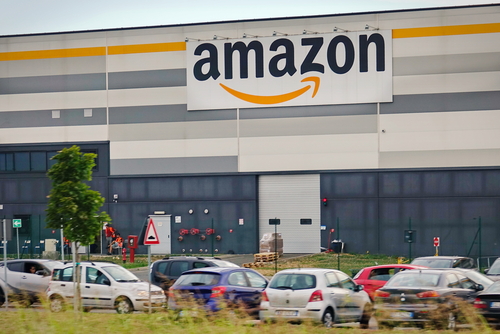The Amazon problem: Making adversity the mother of invention
Amazon has long been a kind of big shapeless threat hanging over retail, but now this threat is solidifying into something that could compromise the medium-term survival of even the most established retail brands.
Already in 2018, we’ve noticed that ‘The Amazon Problem’ is now dominating retail conversations more than ever before and we’re also seeing a real sea change in the sense of urgency with which brands are responding.
Change in 2018
If 2017 was the year of fixing the basics – such as optimising mobile experiences on responsive sites – then 2018 is the year when everyone is asking “What do we need to do to ensure we are still relevant in five years’ time?”
The challenge from Amazon and, to a lesser extent, other pureplay brands, is rooted in their competence in really understand the needs of their customers and then innovating, in order to deliver remarkable (and I use that word deliberately) experiences to meet them.
The result? Innovations such as “Amazon Prime Now” and “ASOS Instant” – services that not only lift their trading performance, but also change customer expectations. Permanently. Thus giving real, tangible shape to the threat from these challenger brands.
One only has to look to what is happening in the US for evidence of that.
Laying waste in the US
When big brands like Nike and Calvin Klein throw in the towel, you know big changes are afoot – and both have cut deals with Amazon. No longer just a competitor, it is a distribution channel for these brands – and that spells trouble for retailers, whose stocks tumbled as a consequence.
In 2017 Amazon took over from Macy’s as the biggest online apparel retailer and surpassed Walmart in sales of electricals – putting it second only to Best Buy who, the previous year, saw single digit growth compared to Amazon’s 28%.
I could go on, but suffice to say that, by the end of 2017, nearly 7,000 stores had closed in the US, the move to the internet being a chief reason.
The threat in Europe
In the UK, 90% of retail sales are still in-store so there is still a massive opportunity for retailers to consolidate their positions and work out how they can live in harmony with the US giant, whatever form this might take. But waiting to see what happens is not an option.
How will Amazon ‘Prime Wardrobe’ affect fashion retailers? How will “Amazon Go” impact grocery stores? Both are coming, and soon. In November, Amazon opened a 3000 sq ft pop-up shop in Soho. It was open for just three days but offered an indication of what might be to come.
Perhaps most tellingly, Amazon has quietly expanded its UK warehouse capacity by 4m sq ft – taking up 20% of all new warehouse stock. The writing is on the wall.
The response? Remarkable customer experiences
But innovation doesn’t have to be the preserve of Amazon. For any brand, targeted and focused experimentation that ultimately delivers remarkable experiences to its customers can be the saviour as well as the threat.
What’s a remarkable experience? It’s something new and appealing that makes customers sit up and take notice – talk to others about. But its impact is tragically transient, as customer quickly see it as the norm and expect it – leaving brands that don’t offer it behind.
Remember the first time you ordered something online that arrived just a few hours later that same day? Wasn’t that a remarkable experience? Don’t we all just expect it now?
Rising to the challenge
I’m pleased to say that brands are beginning to rise to this challenge by accelerating the scale of experimentation – the only way to deliver the customer experience innovation to underpin long term relevance, and survival.
This means understanding how their customers interact with them across their entire journey, from their first online session, via store visits to fulfilment and returns and enriching this picture with data and behavioural insight.
The aim? To identify how well they are meeting both the practical and emotional needs of their customers and the opportunities, previously hidden in plain sight, so that improvements in the experience that eliminate pain and increase moments of delight can be tested and rolled-out.
Don’t debate it. As Nike says, just do it – because if you don’t then Amazon will (or maybe already is).

